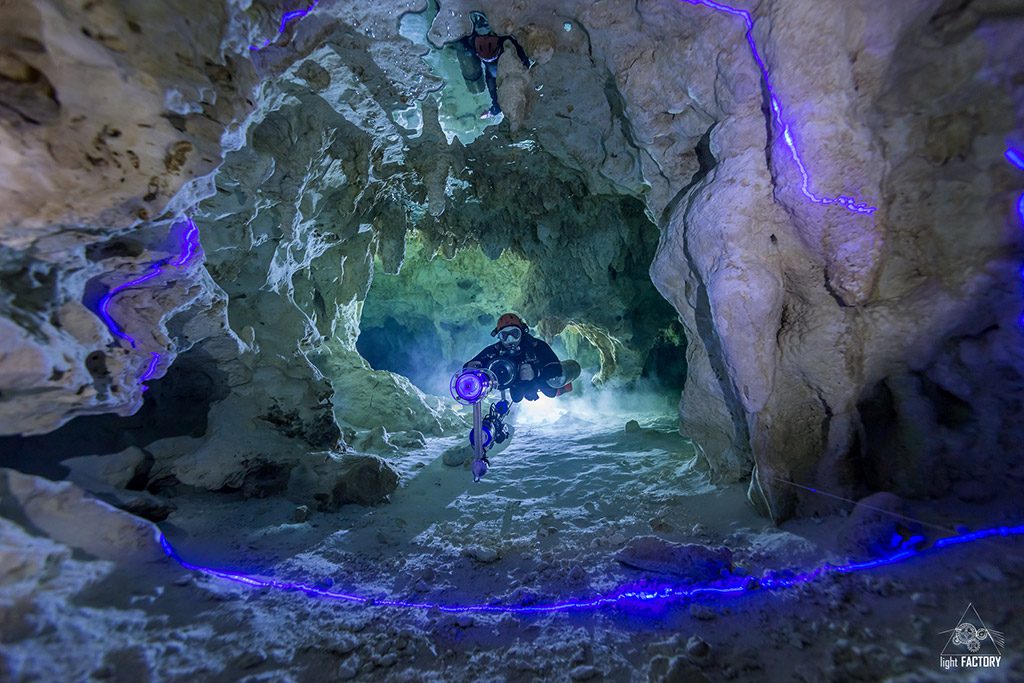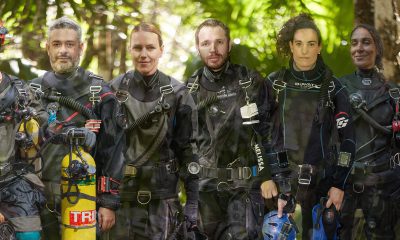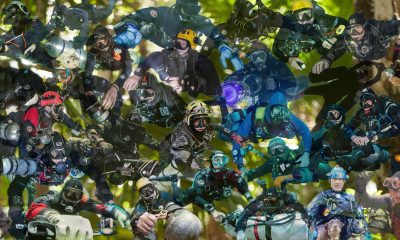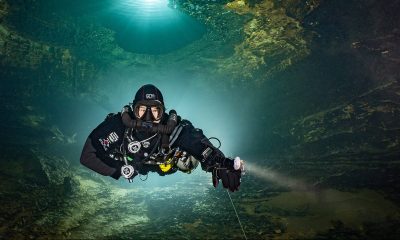Community
The Who’s Who of Sidemount

Robbie Schmittner
Robbie is the former owner of Xibalba Dive Center & Hotel. He has been exploring the caves of the Yucatan for the past twenty plus years and has been involved in notable projects such as Ox Bel Ha and the connections of the Sac Actun and Dos Ojos systems. More recently he has been investigating the workings of the caves of the region to understand how they are formed in support of future exploration. Robbie is a keen conservationist and has been working to help the local communities understand the assets they have in their underground aquifers. Find him on Instagram: robbieschmittner
What is sidemount to you?
Sidemount for me is “the” safest way to go cave diving and the best exploration tool. At least for the shallow and very complex cave systems of the Yucatan peninsula.
What can be improved in sidemount?
Even if there are a lot of new products coming along every year, in my opinion nothing needs to be improved with open circuit sidemount gear. If we talk about sidemount rebreathers, it might be a different story. But, sidemount gear, needs to be “un-fucked.” Because the recent sidemount-hype violated the original configuration, its meaning, the why and for what it was originally designed. Sidemount gear was used by cavers, especially in Europe, long before it was used in explorations in the US, Mexico and the rest of the world. But wherever it was used, the main goal was for it to be as efficient and safe as possible.
I have a feeling you’re gonna explain this to me?
Yes. Sidemount has many benefits. Single tanks are easier to transport, especially if it is through a dry cave to get to a siphon. Two completely separate air sources are safer than just one, even if you are able to separate the source by an isolator. This especially in small caves where only one person can fit and for obvious reasons the visibility will be for sure very compromised. The equipment is designed to allow a diver to fit into very small caves and still be as safe as possible, in places of the cave where dive buddies cannot offer assistance, or their presence could even become a disadvantage. Sidemount was developed for divers to feel and dive totally independent and to not depend on another diver. Or in other words, for solo cave diving.
We always taught divers that they have to be able to solve any problem they might be faced in a cave by themselves, even in backmount configuration, because it could happen, that team members get separated. This would make them involuntarily solo cave divers. When using a sidemount configuration divers are better equipped for this kind of situation. Many divers saw the advantages of this configuration and wanted to start their cave diving training directly with sidemount gear.

Instructors and dive certification agencies are to blame that today cave divers use sidemount gear configuration which makes no sense at all anymore. For liability reasons no dive association will promote solo diving or cancel gas sharing exercises. But as sidemount gear was developed to be independent, means also that gas sharing would not be needed! That is the main reason why the original sidemount gear is not equipped with a long hose.
Ah, so the long hose is the part you’re having a problem with?
Yes. Rather than following the usual training path of learning backmount cave diving and later moving to the specialty of sidemount, or adapting their course standards to that of the vastly different sidemount gear and eliminating the gas sharing practice, instructors were authorized to simply start cave diving courses in sidemount gear. However, since cave diving standards were designed for backmount and must be adhered to, a long hose was attached to one of the sidemount cylinders to precisely perform the emergency drills that were meant to be annulled by the development of the site mount configuration.
When the whole dive industry accepted this “Oxymoron configuration” and even all equipment manufacturers came out with off-the-shelf sidemount regulator sets, providing a long hose, I stopped teaching it. It is not that the long hose on sidemount gear would make the diving more dangerous, but it makes no sense whatsoever.
In the old days, we used backmount gear in exploration. When we did solo dives we carried a stage, as a “buddy bottle” which was not used, other than in the case of emergency. Obviously, this added even more trouble to a very bulky gear configuration. When a cave passage led us to a restriction, we changed to sidemount gear, but we would change back to our backmount configuration if there was no continuation of the cave behind the restriction, or we explored another part of the cave. That was how it was done in those days. However, it wasn’t long before I didn’t switch back to backmount as I couldn’t make sense of it. In sidemount equipment I was able to dive “all” caves. In backmount only certain ones.
Apart from being able to pass through restrictions. What’s the most important benefit for you?
That I can dive safely on my own, which is the best way to dive in small and silty caves.
[Ed.note: Global Underwater Explorers (GUE) does not sanction solo diving in backmount or sidemount configurations.]
Tips for new (sidemount) explorers. In and out of the water.
Take it easy, never push too much or too fast. Listen to that inner voice which tells you when it is enough for the day. You can always go back.
Return to: The Who’s Who of Sidemount
DIVE DEEPER
Speaking Sidemount: E085 Robbie Schmittner – Understanding the Caves of Yucatan
YouTube: GoPro: Cave Explorer’s Near Death Experience
YouTube: Robbie Schmittner
























































